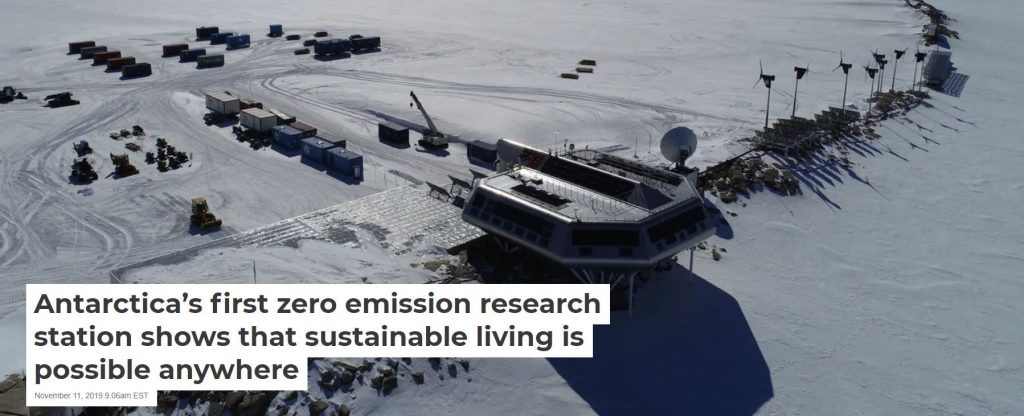100% Wind & Solar Energy At Research Lab In Antarctica

The station was first imagined by Belgian explorer Alain Hubert, who crossed Antarctica by kite ski in 1998. It was constructed by the International Polar Foundation together with many partners and has welcomed researchers since 2008 who come to measure ice flows, the atmosphere, and natural biomes. As reported by Kate Winter, who is the current holder of the prestigious Baillet Latour Antarctica Fellowship, in The Conversation, the research station is anchored on raised pylons that allow it to hover above the East Antarctica Ice Sheet on a narrow granite ridge.
While there are other research stations in Antarctica, Winter says none are quite like the Princess Elisabeth facility.
“Almost every inch is covered in solar panels—on the roof, on the walls, on the side of sleeping containers. They are even screwed to frames anchored to the ground. Solar panels have to be mounted high above the snow covered ground to capture the 24 hours of daylight during the austral summer.
“Wind turbines are drilled into the granite ridge beneath the snow and ice, removing the need for large concrete foundations. (Concrete will not set in the bitter cold of Antarctica) Their blades are maintained with carefully designed polar lubricants, but they can shut down production during intense storms. These renewable energy sources melt snow for water, which is filtered and reused on site to reduce waste.
“The whirl of nine wind turbines generates the reassuring sound of regular clean electricity on base. While other research stations have to use fossil fuels to keep station staff warm, fed and hydrated, the Princess Elisabeth station uses 100% renewable energy supplied by the sun, the wind, and plentiful frozen water.
“There’s no need for conventional heating here either. Nine layers of cladding and insulation keep the biting Antarctic cold out, and the pleasant warmth of the station in. Every piece of electrical equipment runs on renewable energy. Even my hair dryer is powered by the almost constant Antarctic winds and summer daylight.
“When I asked Alain Hubert, the expedition leader, why he wanted to build a zero-emission base in Antarctica, he said that if we can do it here, we can show the world that it can be done anywhere. I hope life and work with no carbon emissions can become a reality for people everywhere. The Princess Elisabeth Antarctica Research Station shows us that these zero-emission lifestyles are within reach.”
From: https://cleantechnica.com/2019/11/13/100-wind-solar-energy-at-research-lab-in-antarctica/

